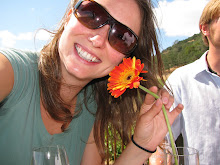Thursday, September 18, 2008
Dissident Women: Chapter 3
This chapter describes the changes of gender roles with regards to indigenous women in Chiapas, Mexico over the last thirty to forty years. As a religious culture, the women began to learn group organizational skills in the late sixties and seventies when the San Cristobal Diocese began groups to inspire women to evolve with respect to the ideas of the church. The church promoted them to reinvent the view of the ‘subordinate women’ within themselves and their communities. This was not an instant change but possibly helped instigate an internalization of the idea that things could change. Then in 1983, the CIOAC, or the Independent Organization of Agricultural Workers and Peasants, organized a march to Mexico City. This march was to promote the peasant agenda and make the nation aware of their struggles over the land. Women participated in the march, but were not part of the political process. Also, the women who participated were there, not to represent themselves or to represent other women, but because they did not have a husband or an old enough son to represent their family. Still, this was a new direction because the women were realizing that they could affect how things changed and possibly better the future for their children. In 2001, there was another march on the capital, this time by the EZLN, or Zapatista National Liberation Army. This march was directed towards indigenous rights and autonomy. There were many parallels between the marches, but the small differences, as the book explains, show best how the gender roles have evolved. The women in the second march were there as representatives for the other Zapatista and indigenous women. Also, they took part in the political discussions. These marches were not the only way women participated in these movements. In the eighties, after the peasants “invaded” the land, the women stood face to face with paramilitary and defended the land, while the men hid in the hills. The women were viewed as pacific victims and were there for able to hold the land with out engaging in physical battles and gun fights, while the men had warrants out for their arrest and would be less helpful to the community if they were killed or imprisoned. This was repeated again in 1997, but this time with the women and babies on the front line and the men and children behind them, all standing their ground with pacifism.
Subscribe to:
Post Comments (Atom)

No comments:
Post a Comment